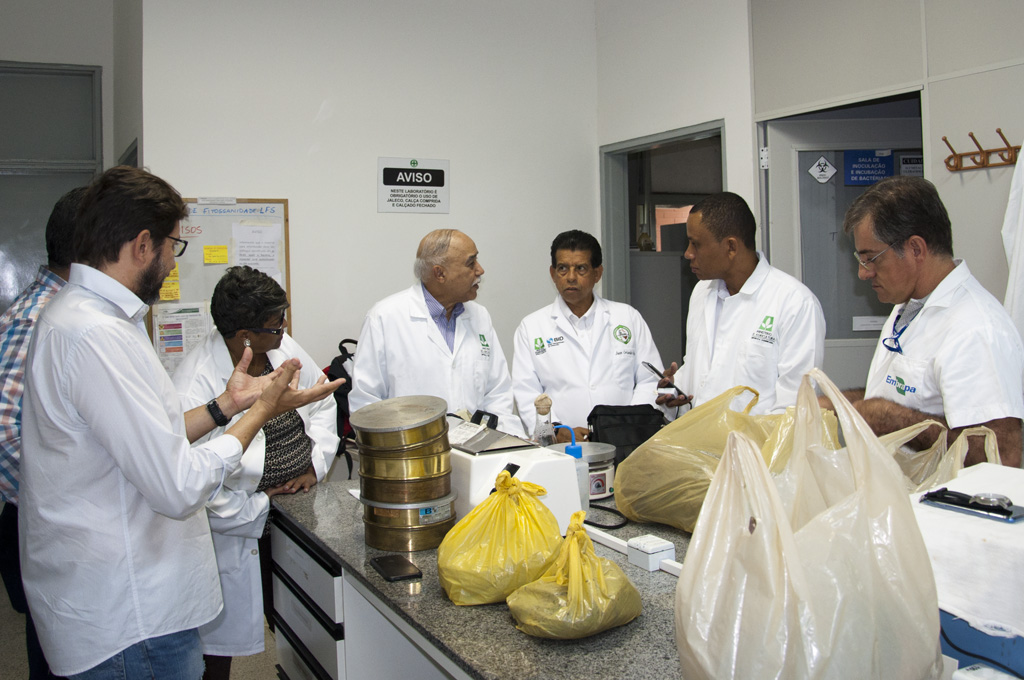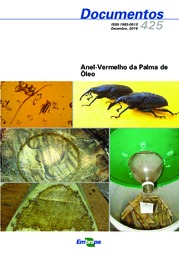Dominican agents learn about research on coconut red ring disease
Dominican agents learn about research on coconut red ring disease
A delegation with agents from the Ministry of Agriculture of the Dominican Republic visited Embrapa Coastal Tablelands' (Aracaju, SE) Phytopathology Laboratory on June 6 and 7 to further knowledge about the nematode that causes coconut red ring disease.
The activity was a part of the schedule of the delegation's technical visit to Brazil, coordinated by Embrapa Semi-arid Region (Petrolina, PE), with a focus on broadening knowledge on the disease's causal agent and methods of identification. One of the main goals is to ensure the Dominican Republic has a process of importing nematode-free seedlings.
Under the coordination of the researcher José Mauro Castro, a specialist in nematology at Embrapa Semi-arid Region, the Dominican visitors, headed by the director of the Ministry's Plant Health Department, Porfirio Fernández, and the subdirector of Plant Quarantine Clara Coronado, visited irrigated coconut plantation areas in Petrolina before moving to Conde, BA, where they collected materials for analysis at Embrapa Coastal Tablelands' laboratory.
At the laboratory, the visitors closely followed the process of extracting the nematode from tissue (coconut roots and stem) and the microscopical analysis. In this procedure, stem and root samples are placed in containers with water, and 12 to 24 hours later the material is sieved for microscopical visualization.
At the Embrapa Unit, the visitors, who had also been accompanied by the technical consultant Luiz Mirizola, were supported by the Lab Management Sector through their supervisor Tânia Dantas and analysts Ricardo Coelho and Francisco Santos, as well as by the researcher Viviane Talamini, specialist in plant pathology with a focus on coconut palm diseases.
Disease
Red ring disease causes serious damages to coconut production in the country, and it attacks several other palms of economic importance, including African oil palm. The main disease vector is the South American palm weevil (Rhynchophorus palmarum), which transmits the causal agent, the nematode Bursaphelenchus cocophilus, previously named Rhadinaphelenchus cocophilus until recently.
The name of the disease is due to the appearance of one of the main symptoms, a colored 2-4 cm wide band in the internal part of the coconut palm stem. This symptom, however, varies according to plant age, variety and plantation conditions.
Externally, the leaves wither and become golden yellow. These leaves generally break, remaining for only a few days with a single central bunch of 4 or 5 green leaves. In some cases the fruits fall, but flower heads remain normal.
The first epidemics started to appear in the early 20th century, in Trinidad, Jamaica, Honduras, Cuba and Porto Rico. But it was only in 1919 that it was determined that the red ring disease's causal agent was a nematode. In Brazil, the disease was first reported in 1954, in Rio de Janeiro state.
Translation: Mariana Medeiros
Saulo Coelho (MTb/SE 1065)
Embrapa Coastal Tablelands
Press inquiries
tabuleiros-costeiros.imprensa@embrapa.br
Phone number: +55 79 4009-1381
Further information on the topic
Citizen Attention Service (SAC)
www.embrapa.br/contact-us/sac/



